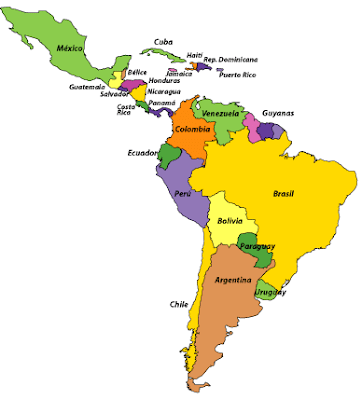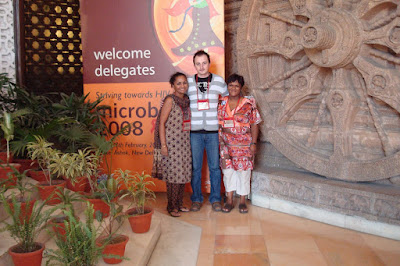
By Mark Hubbard
Nashville, Tennessee
The Event
Wednesday night(May 21, 2008), in what I think of as semi-urban Nashville, Tennessee, U.S.A., a whopping 80 people gathered to address the future of HIV prevention ("Beyond Condoms.") The audience consisted of prevention, treatment, and care professionals, administrators, health department staffers, persons living with HIV/AIDS, and other community members. Three gifted researchers spoke briefly about their research and then frankly answered questions from the rest of the “experts” in the room.
One has spent much of his life focused on learning how HIV gets into cells, and refers to microbicides as “chemical condoms.” Another is a renowned behavioral scientist who works for the United states government and uses the pronoun “we” when he talks about black gay men who have sex with men. The third is involved in countless prevention projects globally and recently led efforts to convince the United States to fund two foundational domestic prevention trials.
Dr. James E.K. Hildreth talked about creating the Meharry Center for AIDS Health Disparities and how its mission exists at the confluence of biology, behavior, and community. Emphasizing safety as his number one priority as he works to develop his product, he described the compound as
very inexpensive to produce
already in use in humans in 1000s of products
not having N-9-like surfactant properties at the concentrations used
blocking other STIs such as the herpes virus
unlikely to be vulnerable to mutation based resistance
Greg Millet led us through the data he is so brilliant at analyzing like a field guide whose most important priority is to convey the humanity in what is being described. After thoroughly establishing that reported sexual activity and substance use does not explain the marked disparity in HIV/AIDS among black men who have sex with men, he proclaiming that it is time to move from facts to action. He categorized potential strategies as biological, interpersonal, and structural, exploring a number of ideas including
biomedical interventions including microbicides
the roles of sexual networks and influencing factors
the role of low income both as a risk factor for infection and low healthcare access.
Dr. Sten Vermund summarized “wins” and “losses” in terms of new infections and recent research progress. Citing current reports, Dr. Prevalence-Incidence, as I’ll now think of him, went on to show that black men and older black women in the U.S. suffer prevalence rates comparable to those in countries like Cambodia, Ghana, and Haiti. As the principal investigator of the HIV Prevention Trials Network, he outlined two planned multi-site domestic U.S. HIV prevention trials. HPTN061 will test the feasibility of a community level multi-component intervention for black men who have sex with men. HPTN061, or ISIS will address the extraordinarily high rate of infection in women of color, including those who reside in geographic “hot spots.”
Breaking It Down
The Q & A session was extremely lively. Written and verbal questions moderated by yours truly were met with frank answers and the occasional polemic. Dr. Hildreth waxed pessimistic when asked about rectal products, referring to work at Hopkins by a former colleague that found simulated ejaculate traveled as far as the transverse colon. [Based on my own lay person’s enthusiasm about his agent’s safety profile, I’ve referred him to rectal douche acceptability research that I learned about through IRMA.] All three presenters emphasized trust and cultural understanding, and their impassioned discussions of injustice foreshadowed my next planned conference.
The Birth of An Idea
Last year, when a deadline was extended, I applied for a scholarship to the U.S. Centers for Disease Control National HIV Prevention Conference, which I received. The application asked how I would use what I learned, and I committed to identifying important topics and experts and organizing two community forums. This is the first and will be the more elaborate of the two. I confess that when I invited our speakers, I had no idea that their presentations would be so synergistic, but it seems to prove a belief I have that when you get the right people in the room, regardless of the details, good things will happen.
Allies-based approach
OUR success occurred without endless committee meetings, conference calls, or a formal organizational structure. The cost was quite small but significant, yet I never had to handle a single check. How did we do it?
I use a natural, almost ecological approach that is based on listening to what is on the minds of numerous regional organizations, maintaining flexibility, and leveraging existing infrastructure and a network of established relationships. While I handle a chunk of the planning and most of the marketing, these supporters help with all aspects of the project, including obtaining presenters and funding, lending prestige, and helping to get the word out.
The list of thank-yous is quite long, but they are heartfelt. I couldn’t have done it without a lot of help of my friends.
==========
Mark Hubbard, 46, is a member of IRMA and the chair of the Tennessee Association of People With AIDS and has lived with HIV/AIDS for over two decades years. Mark first volunteered in 1987, and began engaging in prevention education and appearing publicly in 1997. He became active in community planning for care and prevention the next year. Mark has served three Vanderbilt University affiliated research and treatment Community Advisory Boards since 2001. He has assisted with registered dietician, nursing, and medical school student training at Vanderbilt and Meharry Medical College. Mark travels across the region and nationally to work with, present to, and learn from persons living with HIV/AIDS as well as the professionals and organizations that work in prevention and treatment research and services.
==========
Pictured left to right are Dr. James Hildreth, Mark Hubbard, Dr. Sten Vermund, and Greg Millet
 Kate Morrow, PhD, Assistant Professor of Research, Centers for Behavioral & Preventive Medicine, Department of Psychiatry and Human Behavior, the Warren Alpert Medical School of Brown University and the Miriam Hospital, Providence, Rhode Island, USA will present, “Women and Anal Sex: Yet Another Reason for Rectal Microbicide Advocacy” on July 10, 2008. Please save this date!
Kate Morrow, PhD, Assistant Professor of Research, Centers for Behavioral & Preventive Medicine, Department of Psychiatry and Human Behavior, the Warren Alpert Medical School of Brown University and the Miriam Hospital, Providence, Rhode Island, USA will present, “Women and Anal Sex: Yet Another Reason for Rectal Microbicide Advocacy” on July 10, 2008. Please save this date!



































